What’s Next for Developer Platforms: Embedded Integrations and APIs
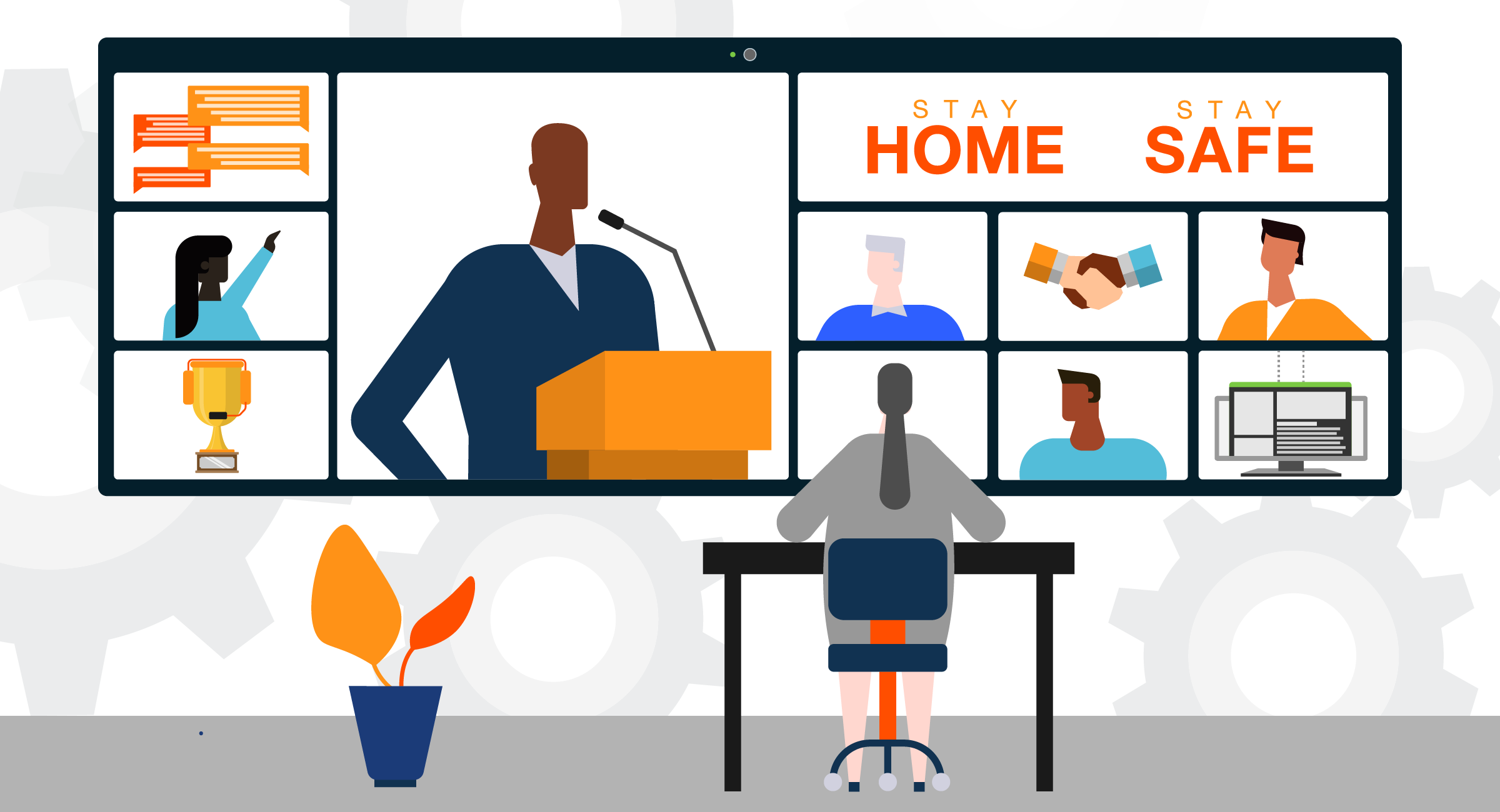
This is a companion piece to Jeremy Glassenberg’s talk at the March 2020, API and IPA Meetup in San Francisco. The full video of his talk is below and on Moesif’s YouTube Channel.
Introduction
As popular web services extend their developer platforms for partners to integrate directly into their interfaces, design trends are forming from experiences in the world of embedded integrations. With Google Drive connecting tools like Balsamiq and ShiftEdit, Gmail enabling Docusign in their web and mobile UI, and services like Trello providing plugins within their own interfaces, custom experiences powered by third parties are proving themselves to be a great way to improve your product and grow your business.
Let’s see what’s been successful and unsuccessful, what trends are working, and what UX and technical considerations are needed to launch a successful embedded integration plan.
False Start in 2008
The first attempt at embedded integration frameworks, letting third-party stuff happen in your interface, got a little messy. Early solutions included iGoogle, OpenSocial and even youOS, a YC company making a webpage act like an OS.
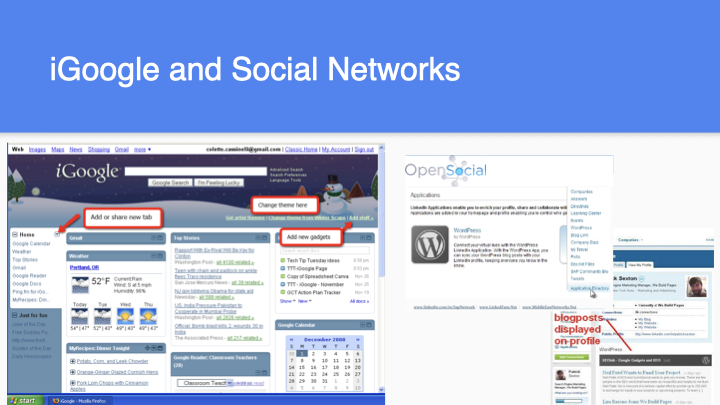
Back in 2008 - 2010 the confounding issue was simply that the use case hadn’t been thought through. Consumers didn’t necessarily want to make the web act like an OS, or integrate content from third parties into their social network profile. There was no market demand.
Compounding this, was that iGoogle and other platforms weren’t just developer-facing, but when these products failed, they failed in front of consumers. It looked bad for the enterprises, so they were very quietly shut down. And platform providers became gun-shy.
The Rise of Marketplaces
As web services grew and user bases expanded, larger companies saw that there were devs hacking together solutions to build features and services they wanted. There was literally a community of people trying to enhance Gmail from outside of Gmail. The same for Trello, Shopify, Wix, twitch and many others.
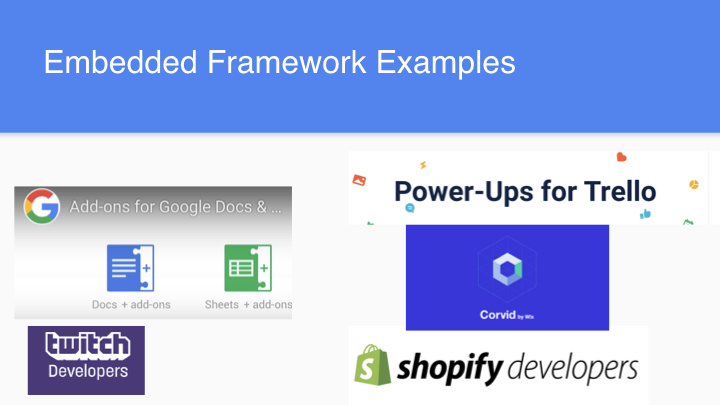
By actively engaging with their customer bases, these companies could identify what they needed and build real use cases. They looked at:
- What are they experimenting with
- How did they start
- What have they learnt
They only launched platforms when they had a decent enough user base that they could see that there’s something missing in their product, that users were asking for, and that they didn’t want to build and maintain themselves.
Successful embedded frameworks really follow a marketplace model. Since there’s already a large user base, it’s mostly about customer retention, not customer adoption or customer growth.
Product & User Experience
There are actually quite a few options for implementing a developer platform as an embedded framework. Highlighting the top three:
iFrames
Lets another website be embedded in your website. Is used by many including Intercom and Google Docs.
| Pros | Cons |
|---|---|
| Free and Open | Performance & Security Issues |
| Simple to set up | iFrames and mobile apps don’t play well together |
Cards
Form like objects. Is used by Slack and Gmail.
| Pros | Cons |
|---|---|
| Mobile friendly | No standards |
| Better security (no client-side javascript allowed) | |
| Good performance |
Triggers
Opens a new window and calls an API. iFrames calls client-side javascript using vendor specific API “programming languages”.
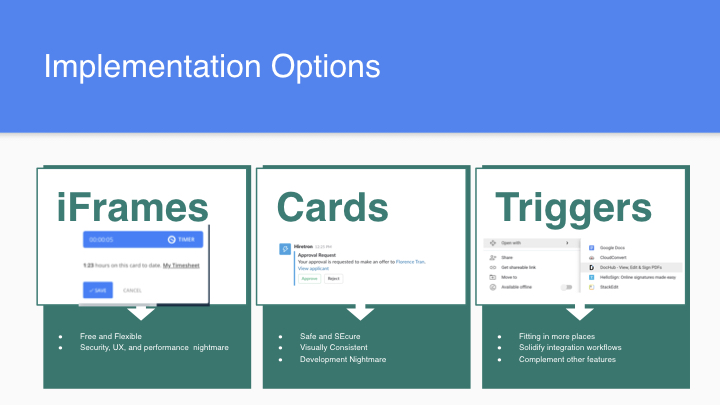
Design & UI
Best practices calls for providing some UI components for devs so that interfaces look consistent. A good example is Shopify, where they are incentivizing and simplifying the experience for developers; Rather than push a particular UI, they just give more code, namely components with their stylings right in their libraries; Apps can then be written faster and have a consistent UI.
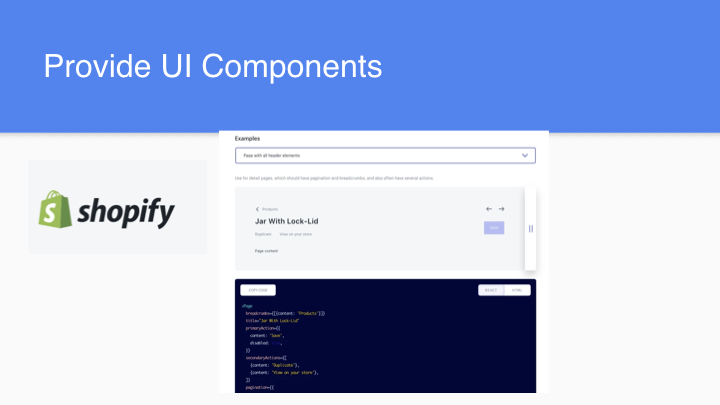
DevEx
Go the extra distance and help your devs easily manage their apps within a manifest, a form (Facebook) or in the dev portal (Trello) itself.
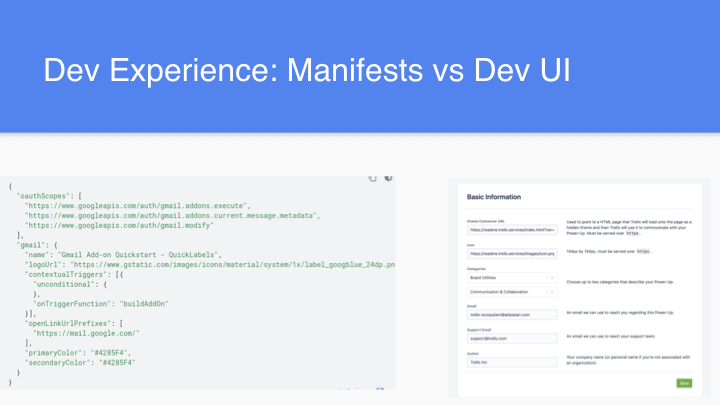
Conclusion
Embedded frameworks enable third parties to work deeply within your own interface, within your own user experience. We’ve covered how it’s possible to go beyond APIs and understand how services can connect with your product and create an experience that makes sense for your users.
Building out frameworks where these third party apps are part of the experience, is fundamental for customer retention.





